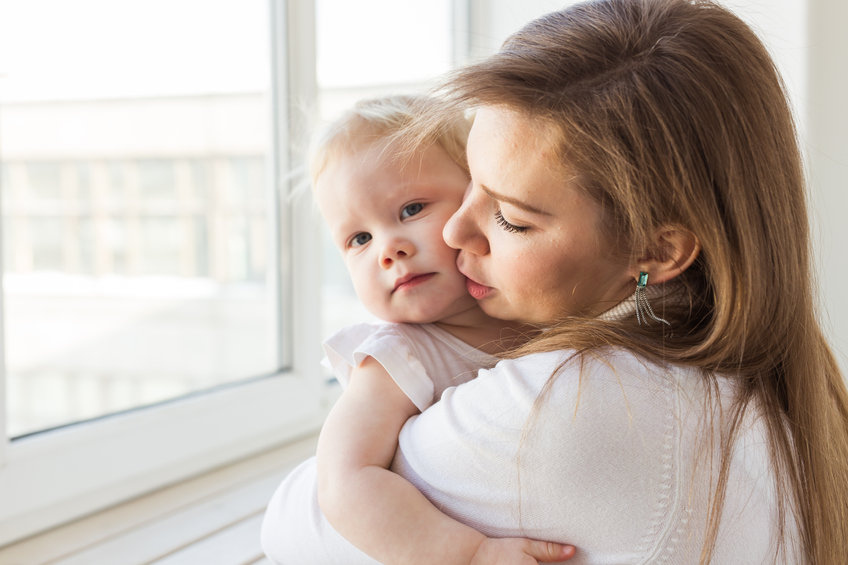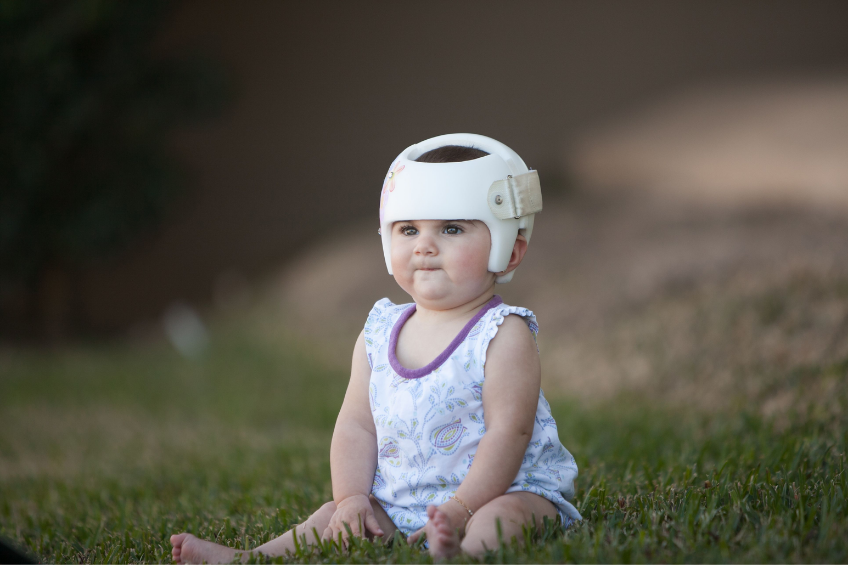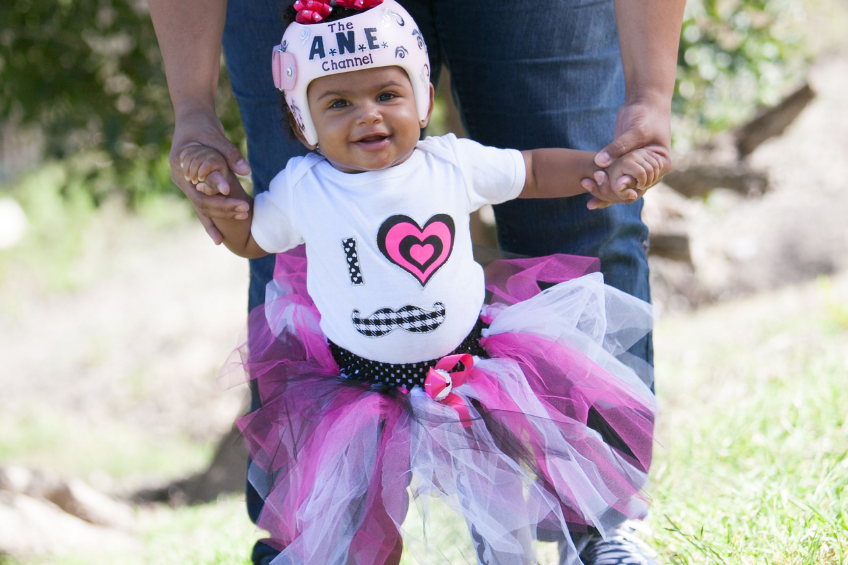Is My Baby Too Old for a Cranial Helmet?
/
Cranial helmet therapy is not new and has been around long enough that it is known to be a safe non-invasive treatment for flat head syndrome also known as plagiocephaly. Optimum treatment should begin as early as possible, usually at four to six months of age. In unusual circumstances the treatment is delayed and will take longer to rectify. A normal treatment routine is when the helmet is worn most of the day up to twenty-three hours with one hour of helmet removal. At that time the helmet will be washed, and the baby’s head checked to make sure there are no red marks that would indicate too much pressure at certain places.

Usually helmet treatment if started early could be as little as twelve weeks depending on the severity of the deformity and how well the parents take on the responsibility of helmet wear.
What happens if for some reason helmet treatment is delayed?
There could be multiple reasons for the delay in helmet therapy for plagiocephaly sometimes due to the parents, the doctor, or the patient himself. What would characterize a valid reason for delay of treatment? If a baby has severe health issues at birth that are not resolved by the optimum time that treatment should be started there is no choice but to put off the helmet. A baby who is premature at birth who must stay in the hospital for weeks or months due to severe complications could not be fitted for a helmet no matter how much it is needed. Sometimes the hospital stay is the very reason for the flat head. By the nursing staff unknowingly keeping the baby in the same position in the crib the flat head is created there. Certainly, the fact that the baby is in the crib for most of the day could very well be the cause of their misshapen head. Who could blame the devoted medical team for keeping the baby in the same position when there are multiple infants to be taken care of at the same time?
For a first-time mother, experiencing severe health issues with her baby, a flat head is the last thing she is worrying about. Rather concern about weight gain, alertness or checking on working organs whether it be the heart, lungs or kidneys is certainly on the top of the parent’s very important list. This is certainly an issue that cannot be avoided.
Charley Z. was born with a severe heart problem that kept him in the hospital for weeks after his birth. Thankfully, a long and serious open-heart surgery fixed the problem, and he is now a normal thriving active toddler getting into some sophisticated mischief. A side effect of his hospitalization was a flatness on the back side of his head. He was just the right age when he started cranial therapy at about 4-6 months and his treatment was short at less than four months. His parents were lucky that his health improved at the opportune time for cranial helmet therapy.
Alicia B. had major complications from a premature birth. She was only discharged at eight months of age. Her parents were so excited to bring her home that they totally ignored the advice of their pediatrician to get her evaluated by a competent cranial specialist. Only when a relative noticed her head at her year-old birthday party did Alicia’s parents begin to look into cranial therapy options. Since Alicia was their first born and only child, they had no yardstick by which to measure her development. Alicia did not get fitted for her helmet till she was 13 months of age, and this was just in the nick of time. According to the American Academy of Pediatrics, after fourteen months the skull bone hardens, and the baby becomes too active to sit still while wearing the helmet. There is a danger that the baby can tug at the helmet and reposition it incorrectly. It did take Alicia much longer than Charley to finish her treatment but all’s well that ends well and her head turned out fine. Also, a girl can hide her flat head more easily under her hair than a boy, although it is definitely still noticeable.
The worse scenario is neglect or adversity from the family pediatrician. A new parent may notice the deformity on their baby’s head and bring it to the doctor’s attention at a routine checkup. Some doctors dismiss it and insist that it will go away by itself (which it usually does not) or that he does not believe in helmets altogether. If the new parent believes in whatever the doctor says the baby will be stuck with its deformed head. If the parent, on the other hand, is a free thinker, her or she will run for a second opinion and save their baby from becoming a child who could possibly be bullied when he or she starts school.
No matter what the reason is, no one should wait till it’s too late to treat your baby with a cranial helmet. What happens if the time passes, and the baby is past fourteen months of age? This is a whole new sphere of circumstances which we will attempt to clarify. There is controversy and disagreement between cranial specialists as to what is the time limit for cranial therapy correction. As was stated above fourteen months is the general break off point that most practitioners will agree on. There are some specialists that will agree to treat a baby up to eighteen months old, but the process is longer and more intense.

Some doctors claim it is all cosmetic and it is not the worst thing to have a flat head. Girls can cover it with their hair but some men who have flat heads suffer terribly as children by being made fun of by their peers and becoming older men who unfortunately have lost their hair so there is no hiding behind a mop anymore. Wise people look to the future and do not only live in the here and now. Those people are more apt to tackle the issue of plagiocephaly sooner than later.
Parents who are detail oriented and perfectionists sometimes go to the other extreme and will insist that their baby be fitted with a helmet when none is needed. Changing sleeping positions a few times a day and night could solve the problem just as well. A parent such as this will not be satisfied until their baby is actually fitted with a cranial helmet. I wonder if a cranial specialist would agree to that. It’s sort of like putting braces on a mouth of basically straight teeth. Helmet therapy is an exact science, and the helmet must be diligently worn for most of the day and night. Who would want to subject a normally shaped head to such a scenario? The truth is cranial helmets have come a long way and are much lighter and easier to wear. Most babies get used to it in a week or two. Still, make sure that you choose a competent cranial therapist who will not steer you wrong or take advantage of your perfectionism.
There is a rare condition called craniosynostosis which affects about three in every ten thousand babies. This condition is defined as the premature fusion of one or more of the flexible sutures between the bone plates of a baby’s skull. This can hold back the growth of the baby’s skull causing uneven head shape. Another complication of craniosynostosis is the increase of pressure of the fluid inside the baby’s skull. Drastic methods must be used to correct this problem, and this is often surgical. If a cranial therapy center’s therapist comes across such a case, they will not offer helmet treatment but would lead them to the correct doctor to further investigate this issue. The surgical procedure is carried out assuring the parents that the baby’s brain is not compressed by loosening the fused sutures optimally. This permits the skull to grow just as it should with no pressure on the brain as it grows.

The only time that a cranial specialist would treat this condition with a helmet is after surgery to further correct the head shape bringing it up within normal range. There are various age frames that this type of surgery would be done, and this depends on the condition of the baby.
Final Words
So many personalities and preconceived notions go into the decision for parents to agree to helmet therapy for their baby’s flat or misshapen head. Sometimes it’s the doctor who discourages the helmet therapy and sometimes it’s a relative who notices the flattening first. Each parent will react in their own way depending on their history and upbringing. Some people are pragmatic and head immediately to the cranial center to start appropriate therapy if needed. There are others who will just shut out the problem till the baby is too old to be treated, leading them to a life of ridicule by their peers in some cases. Other parents are such perfectionists that they will literally beg a cranial therapy center to fit their child with a helmet when all that is needed is some repositioning. Surgery is rarely an option unless the baby is diagnosed with a rare condition called craniosynostosis. In all cases the parent will feel more confident with more than one opinion to settle their doubtful mind. Once the decision is made it doesn’t take much longer than a week for the baby to adapt to the helmet. The parents’ attitude must be positive as well and then the whole family will adjust just fine.

Cranial Therapy Centers is the only early interventions cranial center in the United States which provides both helmet and manual therapy treatment. We are American Board for Certification in Orthotics, Prosthetics and Pedorthics Facility. Visit us in Lakewood NJ, at 1352 River Ave Unit 14, Lakewood NJ, 08701 or in Teaneck NJ at 1086 Teaneck Road Suite 3F, Teaneck, NJ 07666. You can also email us info@cranialtherapycenters.com
